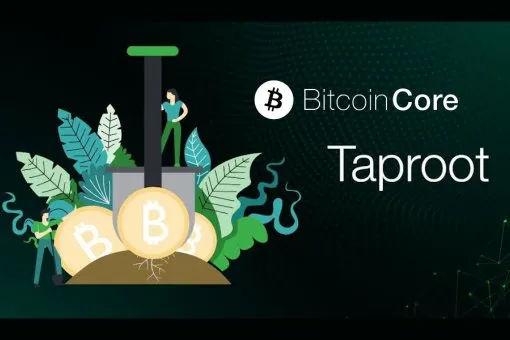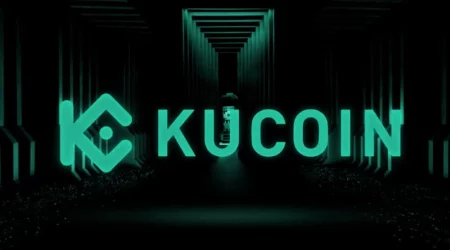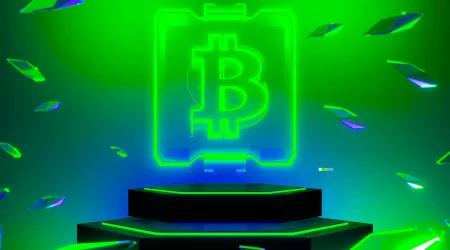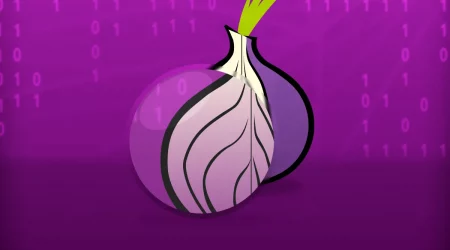Bitcoin Core Developers Optimistic Despite Low Taproot Adoption
Despite the activation of Taproot on the Bitcoin network in November 2021, data available at transactionfee.info shows that only approximately 0.37% of all Bitcoin transactions use it, as opposed to 85% for the Segregated Witness update, which was activated in August 2017.
The Taproot Bitcoin core update was activated in November 2021, promising many new features such as greater privacy, support for multi-signature transactions, and displaying Lightning nodes as Bitcoin transactions.
Even though the share of all Taproot transactions is only 0.37%, Bitcoin Core developers are not concerned, citing similar adoption rates of the previous Segregated Witness bitcoin update, which have steadily increased since launch. The current acceptance rate is 85%.
Read Also: Core Scientific Began To Publish Data On The Daily Volume Of Mined Bitcoins
SegWit, proposed by Peter Wille back in 2015, changes the structure of data storage during bitcoin transactions. SegWit upgrades partially solve the Bitcoin scaling problem by allowing more transactions to be included in each block. Ultimately, this makes Bitcoin more suitable for large transaction volumes.
However, SegWit’s primary goal was to fix “transactional flexibility”, a bug that could cause transactions to be reopened when attackers could change the transaction ID and hash. Within four months of its activation, Segwit transactions grew by 16%.
Table of Contents
Bitcoin Taproot
In January 2018, Gregory Maxwell proposed an update to Bitcoin Taproot which caused frustration with many users who pointed out the lack of privacy options available for Bitcoin transactions. They also wanted the network to be faster and their information to be more secure.
However, traders still want to improve the privacy features of Bitcoin.
“I think it will be a while before we see the entire industry adopting Taproot, but I am optimistic that the adoption will continue,” said Brian Bishop, Bitcoin Core contributor.
Another developer pointed out a similarly slow adoption of the Segwit update.
“Remember, Segwit came out in 2017 and adoption took years after that. It takes time for wallet developers and other users to add support for Taproot and related technologies such as the use of descriptor wallets and bech32 addresses,” he said.
Non-developers lament slow transaction growth
The slow growth in adoption has led some commentators outside the development team to speak out, including Eric Wall , Chief Investment Officer of Arcane Assets, who tweeted:
“@0xB10C, do you think it’s possible to add more decimal points here? 0% is not interesting to watch. I know we must have hit 0.1% or something! You can see the slope going up.”
Indeed, the percentage has grown very gradually with 0.0048% of transactions using the Taproot update on November 14, 2021. The Bitcoin Wiki also shows that the use of pay-to-Taproot (P2TR) exits by Bitcoin clients, wallets, and exchanges is still low. On the other hand, every third Bitcoin hardware wallet already supports P2TR transactions.
However, the question remains whether most users are satisfied with bitcoin as an investment or store of value instead of worrying about improvements in the underlying blockchain technology. Or perhaps smart contracts and enhanced security are features shared with competing blockchains.
For example, the Internet Computer (ICP) is going through the process of integrating with the Bitcoin network, which allows it to interact with the Bitcoin network using ICP smart contracts for Bitcoin transactions. Stacks (STX) is another platform planning to launch non-fungible tokens on the bitcoin network.
Bitcoin Core is in constant development
According to the team, Bitcoin Core development continues to move the Bitcoin network forward by fixing bugs and improving the software, protocol, and peer-to-peer network.
In addition, new technical features such as Miniscript, P2P with BIP324 encryption, Erlay, packet relay, and assumvalid/assumeutxo will be added to the long-term roadmap, as well as efforts to separate the various constituent code elements of a large codebase.











Leave a Reply